5 Top Compound Shoulder Exercises: Build Boulder Shoulders!
Understand how to work your shoulders with dumbbells or barbells for “boulder shoulders.”
If you want “3D shoulders” or a Greek God workout that emphasizes a sculpted upper half, look no further than compound shoulder exercises.
These exercises— which target multiple joints and muscles in the shoulders— help you to build definition, muscle, and functional strength.
Here, we’ll break down what compound shoulder exercises are, what muscles are involved and how you can transform your shoulder structure using 5 simple exercises that engage multiple muscle groups.
What Are Compound Shoulder Exercises?
Compound shoulder exercises are movements that involve multiple joints and engage several muscle groups at once. They focus primarily on your shoulders but usually get a little help from your triceps and chest muscles.
These exercises enhance your overall shoulder strength, stability, and muscular development since they work not only the shoulder muscles but also other parts of the upper body.
If you want to build up your shoulder strength, let’s get to know the top five compound shoulder exercises you can use to help your shoulder muscles develop.
1. Overhead Press
If squats are the “king of exercises” overall, the overhead shoulder press may be a contender to edge it out when it comes to building your upper body strength.
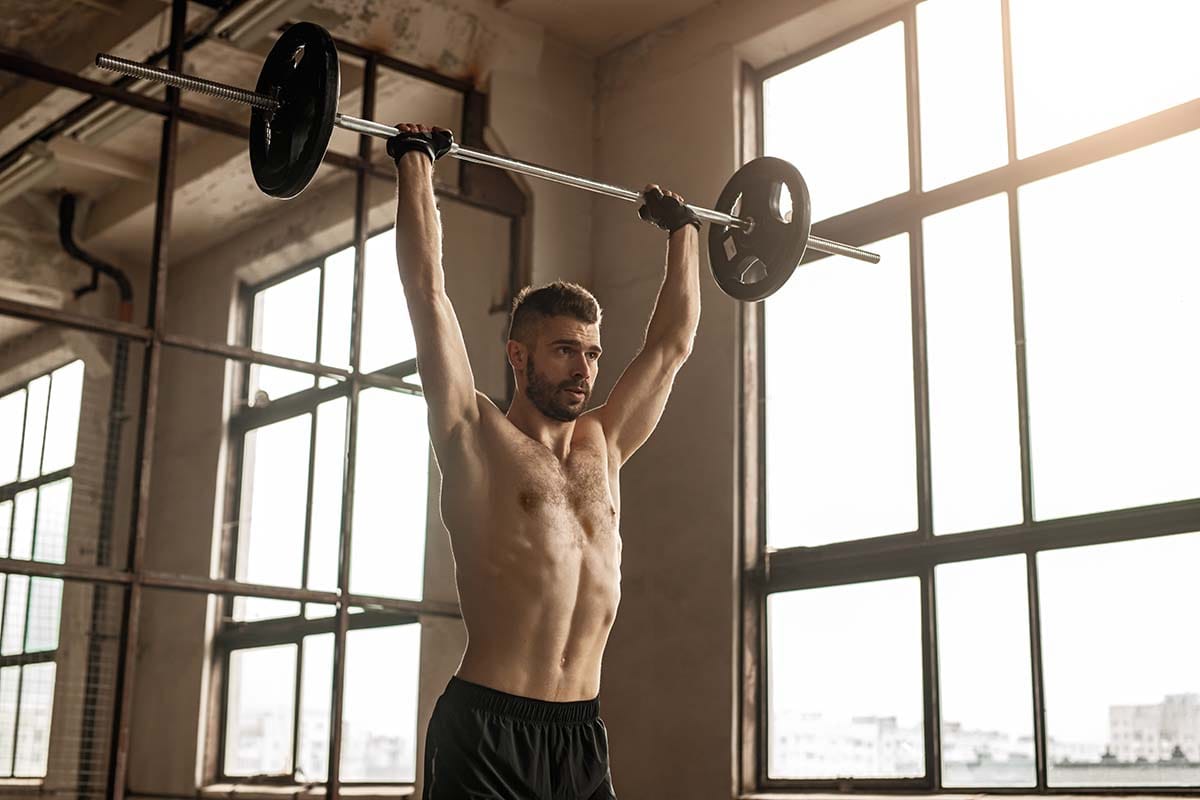
This simple exercise is great for beginner or advanced weight training. You can easily vary your equipment, using barbells or dumbbells and adjusting your weights as needed.
- Reverse: Lower your weight back to shoulder height with control.
- Reps: 3 sets of 8-12 reps.
- Recommended Weight: Start with a weight where you can complete your reps with proper form, typically about 50-70% of your one-rep max.
- Action: Press your weight up and overhead until your arms are fully straight. Don’t lock your elbows out at the top.
- Body Position: Hold your barbell with a grip slightly wider than shoulder-width. If you’re using dumbbells, keep your palms facing forward. Engage your core and keep your chest in a proud position.
- Set-Up: Place your barbell at shoulder height in a rack or start with dumbbells braced at shoulder level. Stand with your feet shoulder-width apart.
2. Push Press
- Set-Up: Place your barbell at shoulder height in a rack or start with dumbbells at your shoulder level. Keep your feet shoulder-width apart, with a slight bend in your knees.
- Body Position: Hold your barbell slightly wider than shoulder-width or hold a set of dumbbells with your palms facing forward (pronated grip). Engage your core and keep your chest up.
- Action: Dip your knees slightly, then explosively extend your hips and knees to drive your weight overhead. Fully extend your arms at the top, but don’t lock your elbows out.
- Reverse: Lower the weight back to shoulder level with control.
- Reps: 6-10 reps per set.
- Recommended Weight: Aim for 60-75% of your one-rep max.
3. Arnold Press
- Set-Up: Sit on a weight bench with back support, holding dumbbells at shoulder height with your palms facing toward you (supinated grip).
- Body Position: Engage your core and keep your back flat against the bench.
- Action: Rotate your palms outward while pressing the weights overhead until your arms are fully extended. Palms should face forward at the top.
- Reverse: Lower the weights back to shoulder height while rotating your palms to face you.
- Reps: 10-12 reps per set.
- Recommended Weight: Use around 40-60% of your one-rep max.
4. Dumbbell Lateral Raise
- Set-Up: Hold a set of dumbbells at your sides, standing with your feet shoulder-width apart.
- Body Position: Have your elbows slightly bent and keep your core engaged.
- Action: Raise the dumbbells to the sides until they reach shoulder height, keeping a slight bend in the elbows. Do not swing the weights; move in a controlled manner.
- Reverse: Lower the weights back to the starting position slowly.
- Reps: 12-15 reps per set.
- Recommended Weight: Start with a lighter weight, focusing on form, typically 10-20% of your one-rep max.
5. Barbell Upright Row
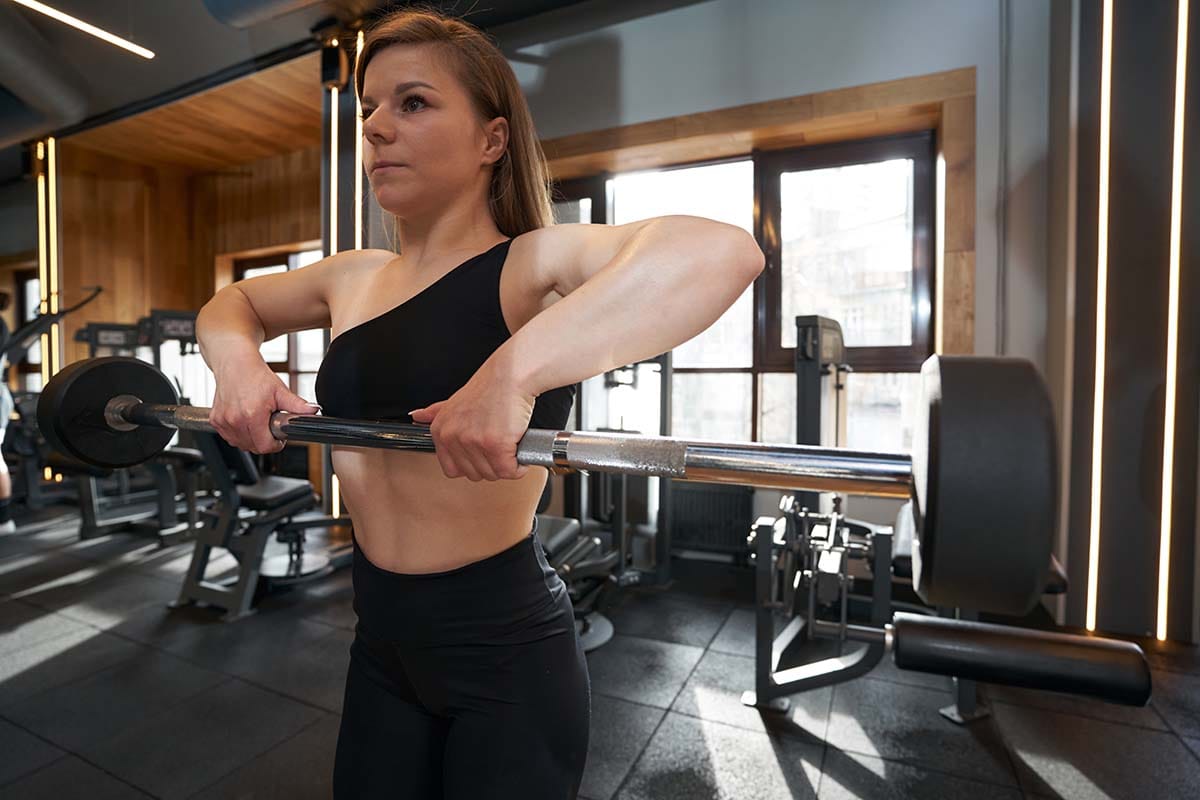
- Set-Up: Hold a barbell with an overhand grip with your hands shoulder-width apart.
- Body Position: Stand with your feet shoulder-width apart and your arms fully extended with the barbell resting against your thighs. Engage your core and keep your back straight.
- Action: Pull the barbell upward towards your chin, leading with your elbows. Keep the bar close to your body throughout the movement.
- Reverse: Lower the barbell back to your starting position slowly and with control.
- Reps: 10-12 reps per set.
- Recommended Weight: 40-60% of your one-rep max
Shoulder Muscles Worked
Did you know your shoulder is the most mobile joint in the human body?
Because of this, the shoulder joint (also called the “glenohumeral joint”) needs a lot of muscles, big and small to power its movement.
Compound shoulder exercises typically target all or most of the following shoulder muscles:
Deltoids
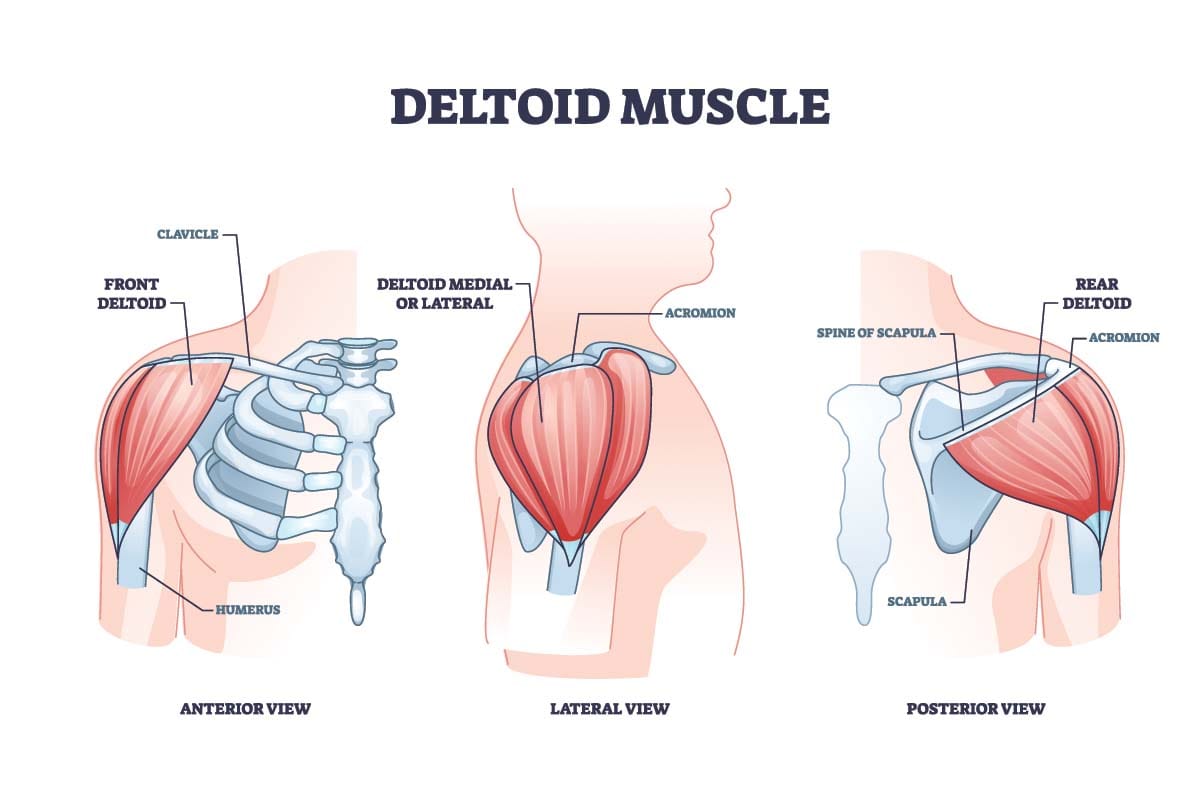
Your deltoids are the main muscle group that works when you do shoulder exercises. The deltoid muscle has three distinct parts:
- Anterior Deltoid (Front): Your front delts are involved in moves where the arms are lifted in front of the body. Front delt workouts help you lift your arms with more capability and ease.
- Lateral Deltoid (Side): The lateral delts, or side deltoids, engage during movements where you lift your arms out to the sides.
- Posterior Deltoid (Rear): This part of your deltoid is activated in movements that involve pulling your arms backwards.
Trapezius
Your trapezius muscles (“traps”) are technically neck, shoulder and back muscles. The upper traps, located between your neck and shoulders, help you elevate and stabilize your shoulders when you do compound movements.
Rotator Cuff Muscles
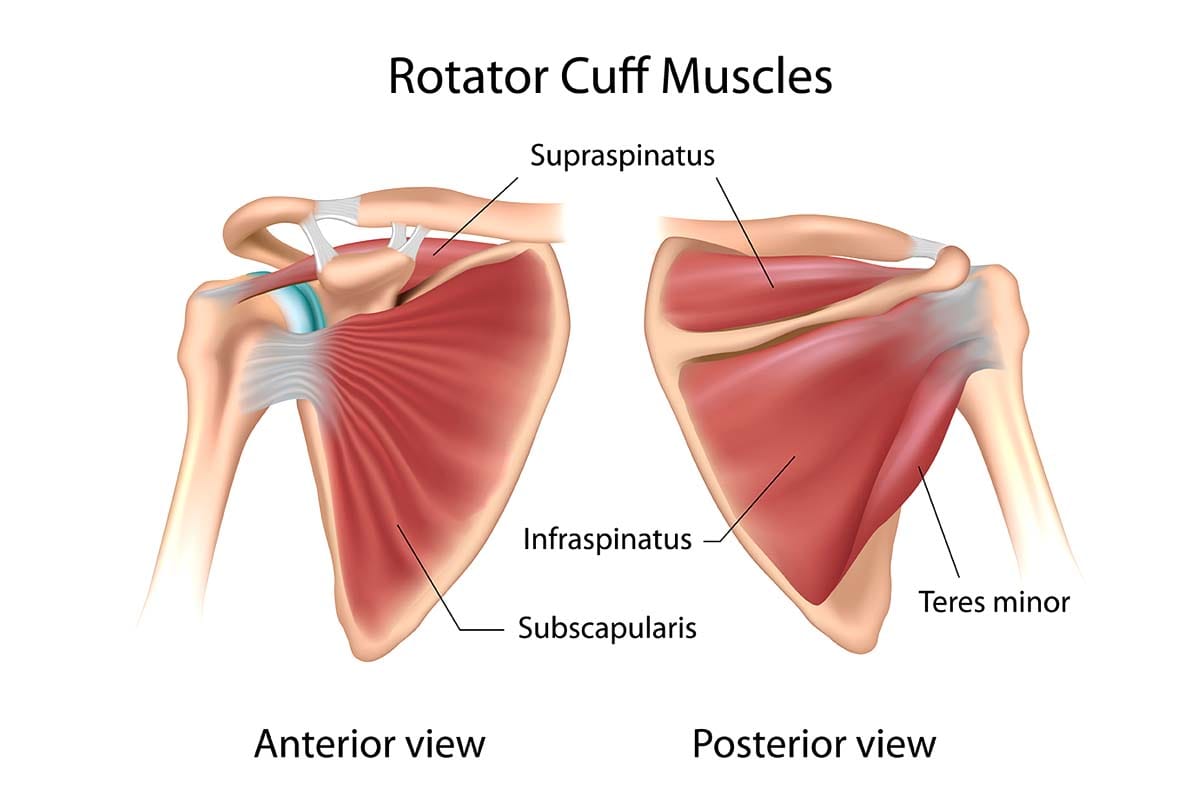
This group of four muscles (supraspinatus, infraspinatus, teres minor, and subscapularis) stabilizes your shoulder joint and assists in rotating your shoulder. When we talk about shoulder injuries, you’ve probably heard the most about torn rotator cuff muscles.
Why are rotator cuff injuries so common?
These are mostly wear-and-tear injuries from repetitive movement. Things like reaching to raise your arms overhead can even aggravate the rotator cuff. If you play a sport that involves movements like throwing or swinging your arms, it can be especially easy to hurt your rotator cuffs.
Athletes in sports like baseball or tennis— where you pitch or swing— and people 40+ are especially prone to hurting their rotator muscles. So, to prevent rotator cuff injuries, it is especially important to use compound shoulder exercises to strengthen these muscles if you fall into one of these categories.
Triceps Brachii
Although they’re arm muscles, your triceps assist in most compound shoulder exercises, especially those that involve overhead pressing movements.
The triceps are responsible for extending your elbow joints, which is primarily what your body aims to do in any kind of pressing movement like a military press or shoulder press to work the shoulders or a bench press.
Upper Chest (Pectoralis Major)
The upper part of the chest muscle is often engaged in compound shoulder exercises, especially those involving pressing movements.
By involving these muscles, compound shoulder exercises provide a balanced and effective way to build overall shoulder strength, improve joint stability, and enhance muscular coordination.
Benefits of Compound Shoulder Exercises
Why should you add compound shoulder exercises to your workout routine? Here are the reasons:
1. Efficient Time-Saver
Full-Body Engagement: Compound exercises let you engage several muscle groups and joints at the same time. An isolation shoulder exercise would really work just your shoulder— and often a specific part of the shoulder muscles at that!
Compound shoulder exercises, on the other hand, often recruit strength from your triceps and your chest as well. Even though you target your shoulders, these moves can be a great way to do double (or triple!) duty and work multiple muscle groups.
This provides a more comprehensive workout in less time.
Higher Calorie Burn: If you’re looking to torch some calories, these exercises burn more than isolation exercises. This is because they involve larger muscle groups and more overall body movement.
Shorter Workouts: This efficiency leads to shorter, more effective workout sessions, ideal for those with limited time.
2. Move for the Real World
Real-Life Movements: Compound exercises mimic everyday activities and sports movements, enhancing overall functional fitness and making daily tasks easier.
Enhanced Coordination: By requiring multiple muscles and joints to work together, these exercises improve neuromuscular coordination and balance.
3. Grow Your Muscles & Build Strength
Hormonal Stimulus: Compound movements stimulate the release of anabolic hormones like testosterone and growth hormone. These hormones are crucial for helping you grow your muscles and develop better strength.
Progressive Overload: As you improve in doing these exercises, you’ll notice yourself being able to use heavier and heavier weights each time.
This is a fitness principle called progressive overload. Basically, it means increasing your workout level in some way, whether through more weight, more volume in your sets and reps, longer workout duration, etc.
In the long run, following the principle of progressive overload, along with your diet and recovery process, will make your fitness journey much simpler and more pleasant for you.
Progression of volume load and muscular adaptation during resistance exercise are linked, and progressive overload is generally considered the best way to build up your strength and muscle mass.
4. Save Your Joints
Shoulder Stability: Compound shoulder exercises engage the stabilizing muscles around the shoulder joint, improving joint stability and reducing the risk of injury.
Core Engagement: These exercises often require core stabilization, which strengthens the core muscles and enhances overall body stability.
5. Correct Imbalanced Muscles
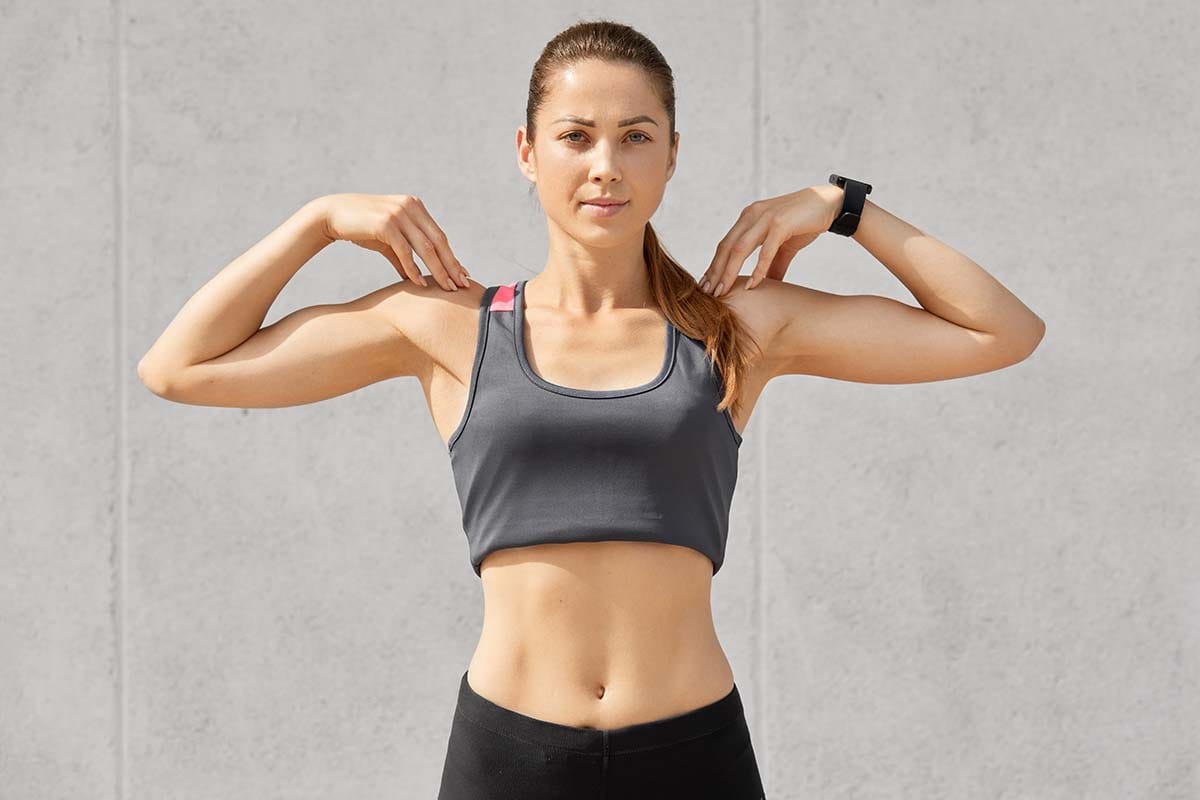
Symmetry and Proportion: Compound exercises promote balanced muscle development by working multiple muscles at once, reducing the risk of developing muscle imbalances.
Functional Aesthetics: This balanced development contributes to a more functional and aesthetically pleasing physique.
6. Heart Health
Boost Your Heart Rate: The engagement of multiple muscle groups elevates heart rate, providing a cardiovascular benefit alongside strength training.
Up Your Endurance: Regular incorporation of compound exercises can improve muscular and cardiovascular endurance.
Incorporating compound shoulder exercises into your fitness routine can lead to significant improvements in overall strength, muscle mass, and functional fitness, making them a vital component of an effective workout program.
Big Picture
As a takeaway, if you’re doing only one type of exercise for your shoulders, make sure they’re compound.
Although isolation exercises are great to use as accessory exercises and have specific functions like correcting imbalances, we recommend compound shoulder exercises as your first go-to if you’re a newbie lifter.
These multi-muscle moves are a great way to:
- Build functional shoulder strength
- Train for hypertrophy to get a more muscular and attractive physique
- Save time by working several muscle groups at once
- Benefits your heart health
- Improve joint function.
All of these key benefits make moves like the overhead press, dumbbell lateral raise, push press, Arnold press and barbell row key ways to get stronger and safer shoulders that will serve you well for years to come!
Related articles


Get fit with Flex
Build muscle & lose weight fast for free.
Available on iPhone + Apple Watch





